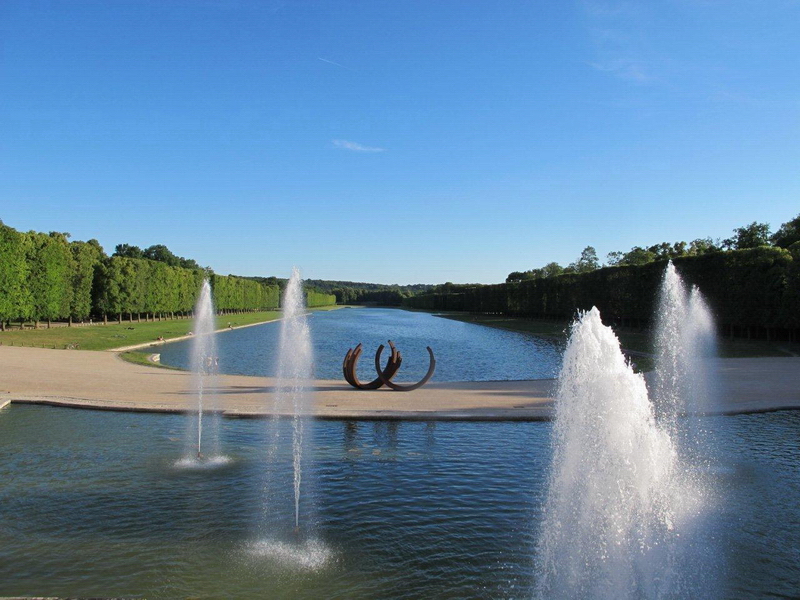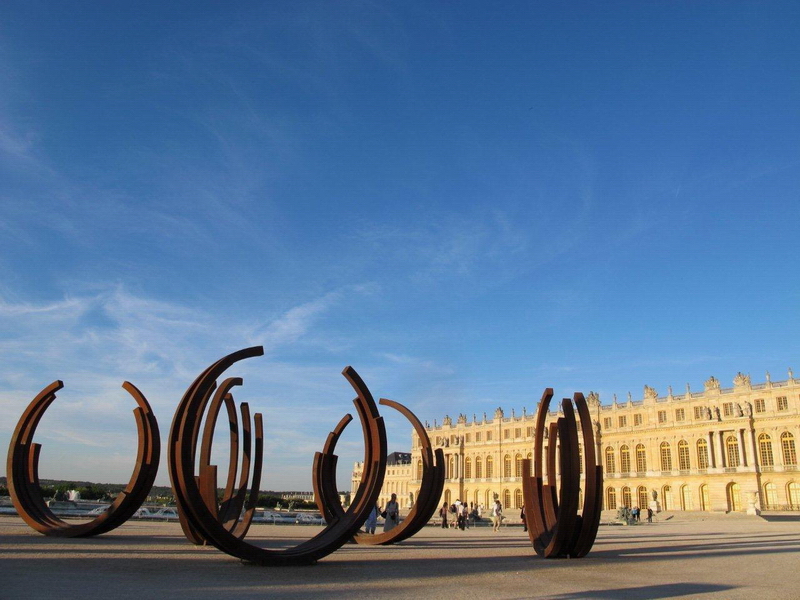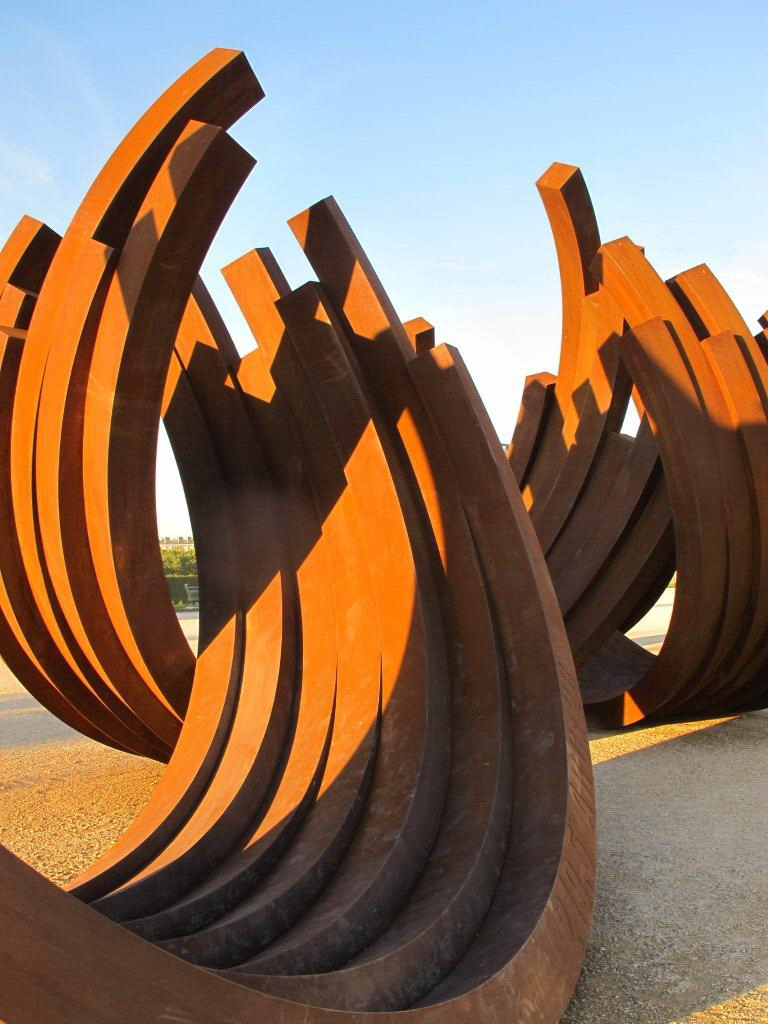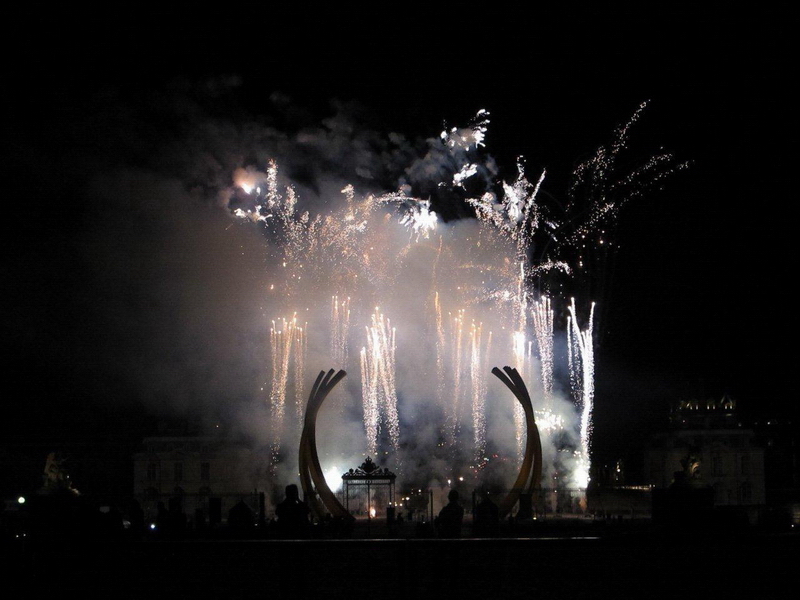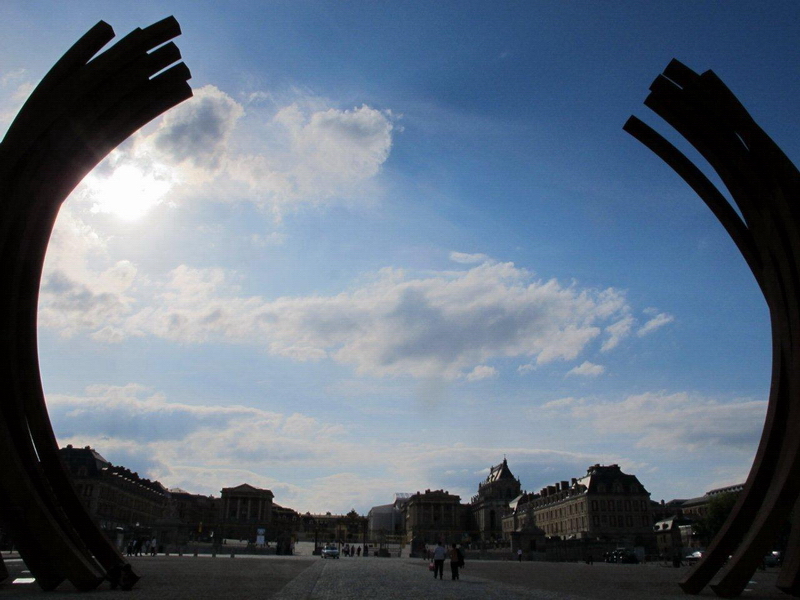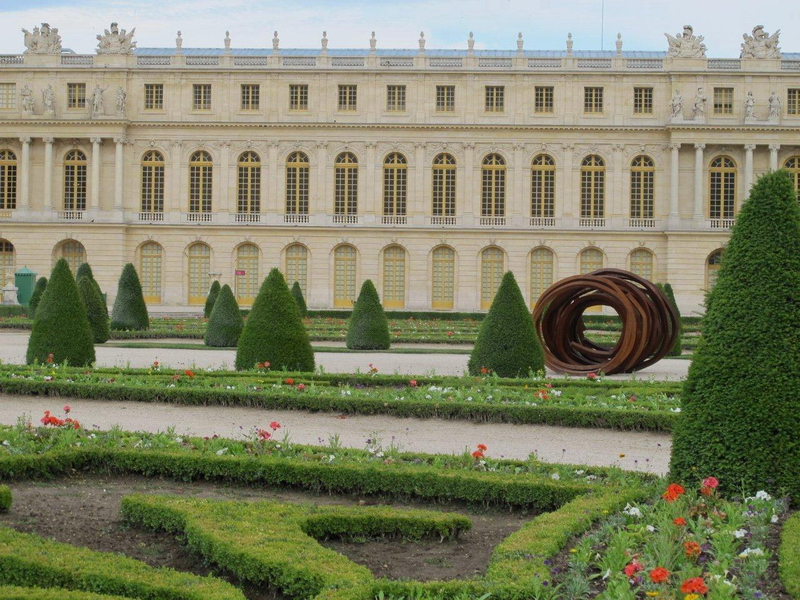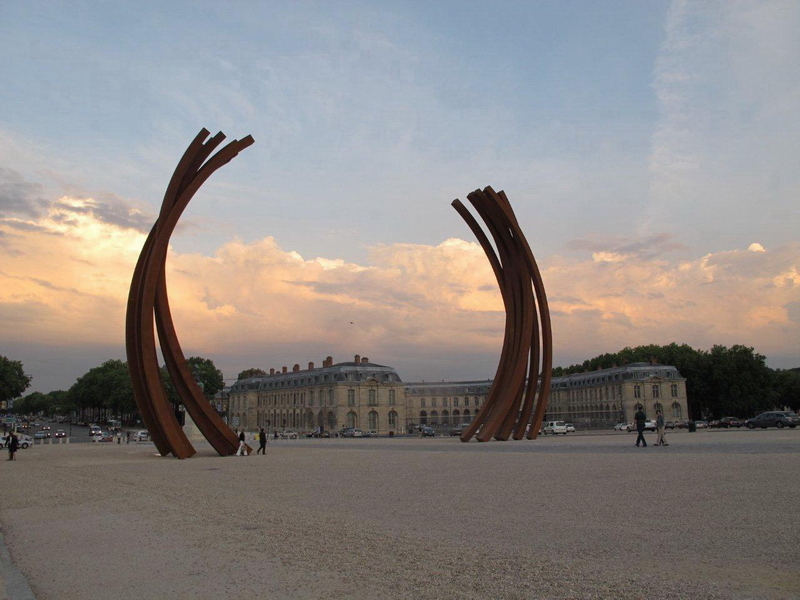Bernar Venet
After Jeff Koons, Xavier Veilhan, Takashi Murakami, it is Bernar Venet who accepts the invitation which the palace of Versailles addresses, every year, to one modern artist. This exhibition, beyond any doubt, is not a monograph by Bernar Venet, simply because the palace of Versailles, not being a museum of modern art, is not aspired to organize similar exhibitions which other institutions carry out with accuracy and utility. On the contrary, at Versailles we never stop asking ourselves about the possible relation between the works of today and this “World Heritage” which is the palace, its decoration, gardens and the setting around which has been defined by it. In this spirit, the exhibition “Venet a Versailles” is innovative compared to previous ones. Actually, it accepts the challenge to invest in the space domain in a large and audacious way as it opens with a work, which welcomes the visitor right from the Place d’Armes, framing the equestrian statue of the King, dwelling, in a more classic way, on the flower beds of the palace of Louis XIV.
Why Bernar Venet? Not only because the alternation rule among French and foreign artists should be kept, this year, the programming of Versailles for an artist who “is French or works in France”, but precisely because after mature reflection, I have considered that his work had some characteristics which made it interesting to be presented at Versailles. His work truly raises two questions regarding Versailles, firstly the question of monumentality and then the one of the relation between a current work with a framework already fixed, either this is urban, natural or historic.
It is this capacity, this tendency passing through his entire work, which has led Bernar Venet to be presented in so many public spaces, in France and abroad, in Nice where he has lived and worked which brought him close to his place of birth, Chateau-Arnoux-Saint-Auban, in the region of Alpes Haute Provence, in Cologne, Beijing, Iceland, Metz, a city I am very fond of, Miami, New York and even Seoul.
I could add that what I like in the work of Venet is his rigor which holds a nice dialogue with another side of Versailles, the one of the sobriety of Mansart, marked by the art of composition and stereotomy, the baroque side of Versailles.
The work of Venet which is devoted to rigor, black, tar, the stabilized rust of Corten steel, subject to the rigor of mathematical calculation, which also knows how to devote itself to the happiness brought to the artist by fortune, hazards, fate and accident, meets thus the double personality of the palace of Versailles the surroundings of which are determined, in an unrelenting way, by the rules of mind but, everywhere, the sediments of time and history depict at which point, in a human work, it would be futile to make the effort to predict and arrange everything. When it comes to the work of Bernar Venet, which is defined by a rigorous view, it could have defined a strict and dry work. It is none of those, because in this artist, the qualities of mind, continuously, transcend his most intimate personality, the one nourished by Man, being himself a person who has never denounced the qualities of his Mediterranean origin.
The straight line or the curve? That is the debate about Versailles which determines its ambivalence, shared between militant classicism and the baroque tendency. This is one argument which passes through the work of Bernar Venet from one side to the other.
Bernar Venet is home at Versailles. He fits Versailles and Versailles suit him. I thank him for having accepted, with generosity and passion, the challenge of this invitation which gives place to many happy moments but also to much agony, in front of the affectionate and amazed eyes of the public, but also to demanding critics, and sometimes, as we know it, to the hostility of biased people who do not feel comfortable with the idea that world changes and that humanity moves forward, and yet, to paraphrase Galileo, “it moves”.
Find out more on the exhibition visiting the website of the exhibition: http://versailles.bernarvenet.com/


